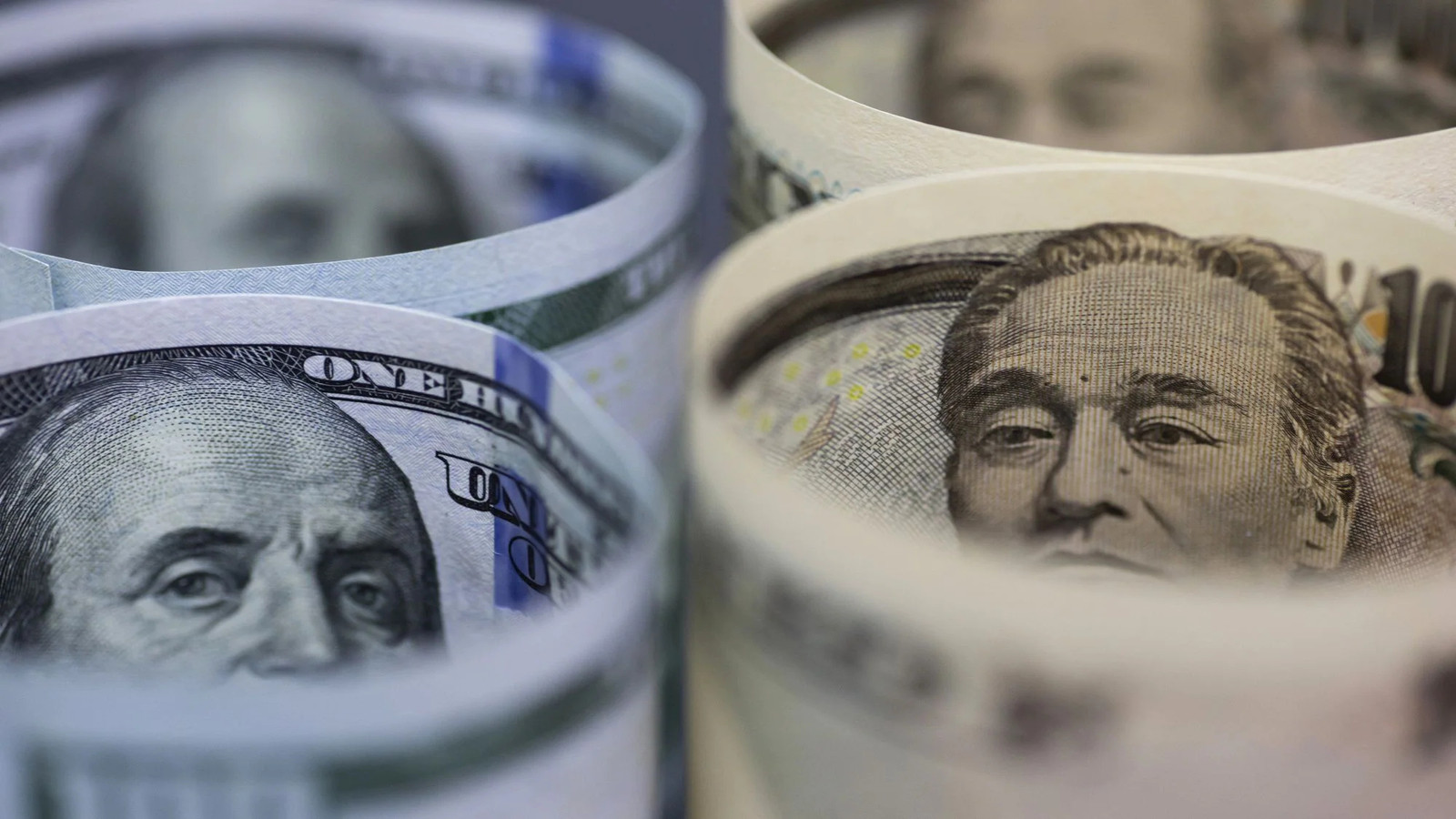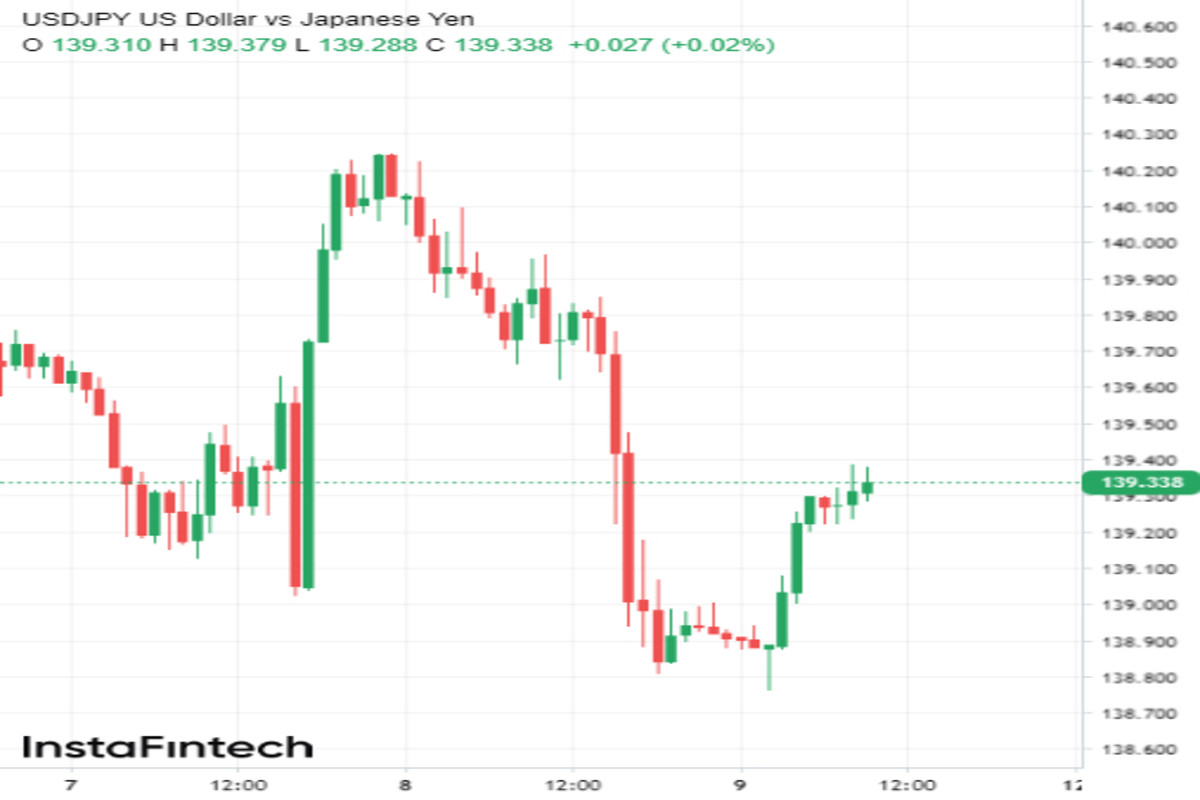
Early on Friday, USD/JPY has been recovering from a significant drop the day before. Yesterday, the major currency pair experienced its largest daily losses since May, and it is now on track for a second consecutive weekly decline. Nevertheless, many analysts remain optimistic about the asset. Let us find out why a positive scenario for USD/JPY is more likely than the negative one.
Potential market miscalculations regarding Fed's plans
The upcoming week promises to be very intense for USD/JPY traders. On Wednesday, the Federal Reserve will announce its monetary policy decision, followed by the Bank of Japan on Friday.
However, the market is already extremely anxious. Investors are reacting very emotionally to any data that might influence the decisions of the American and Japanese regulators regarding monetary policy. This was the case yesterday.
On Thursday, the US dollar sharply declined across the board, sliding down by more than 0.6% after the release of the US Department of Labor's weekly initial jobless claims data.
The report showed that jobless claims significantly exceeded economists' preliminary estimate of 232,000 and reached 261,000, the highest level since October 2021.
The sharp increase in initial jobless claims shed more light on cracks in the US economy, reinforcing the belief that the Federal Reserve is approaching the end of its current tightening cycle.
Against this backdrop, the yield on the 10-year US Treasury bond plummeted yesterday to its lowest level in two weeks at 3.72%, putting strong pressure on the pair. The US dollar declined against the yen by 0.87% to 138.9.

Currently, futures market participants a pricing in a 75% probability of the US central bank leaving interest rates unchanged in June, and they have strong doubts about the continuation of the aggressive policy.
Guillermo Felices, global investment strategist at PGIM Fixed Income, noted that the signs of a slowdown in the US economy were becoming increasingly evident. "A slowing US economy gives the Fed room to pause after 500 basis points of consecutive interest rate rises. The key question for markets is whether the Fed will just skip a hike in June and resume their tightening campaign in July," he said.
According to experts, the key benchmark for US policymakers in planning their further monetary strategy should be the US CPI data, which will be released a day before the FOMC decision on interest rates.
If traders see that inflation in America is not slowing down, it will likely draw parallels with the situation in Canada and Australia, where stubborn price growth has prompted regulators to take harsher measures.
Earlier this week, the Bank of Canada and the Reserve Bank of Australia shocked the markets with unexpected rate hikes, although in both cases economists did not anticipate hawkish moves.
Given these unexpected policy adjustments, there is a possibility that the Federal Reserve may increase interest rates again. However, it is still unlikely due to the fragile state of the American economy.
Alternatively, the Federal Reserve might pause tightening in June to alleviate some pressure on the economy but will signal the need for further anti-inflation measures. This scenario appears to be more plausible.
Any of these scenarios can strengthen the dollar across the board. This would sent USD/JPY, fueled by optimism regarding the strengthening of monetary divergence between the US and Japan, back to its recent highs.
Yesterday, International Monetary Fund (IMF) spokesperson Julie Kozack confirmed that market participants may be deeply mistaken about the US monetary policy decisions.
On Thursday, she pointed out persisting inflation problems and stated that major central banks, including the Federal Reserve, should continue actively raising rates this year.
"If inflation does prove to be more persistent than expected, then the Fed may need to push interest rates higher for longer," Kozack said.
False hopes for policy changes in Japan
Yesterday, the downward pressure on the USD/JPY pair was also countered by optimistic GDP data from Japan. According to statistics, in the first quarter of 2023, the world's third-largest economy grew by 2.7% year-over-year, surpassing the forecasted 1.9% increase.
As we can see, Japan not only managed to avoid a technical recession but also significantly restored its economic growth. This fact did not go unnoticed by yen bulls, who hope that a stable economy will prompt the Bank of Japan (BOJ) to normalize its monetary policy sooner.
Speculation about the BOJ adjusting the yield curve control mechanism resurfaced in the market ahead of the June meeting of the Japanese regulator. Forecasts were split almost in half: some traders expect changes as early as this month, while others anticipate them to occur in July.
However, most analysts are confident that at this stage, the central bank is not ready to take even a modest hawkish step, despite the recent growth of GDP and inflation.
Uncertainty about wage growth prospects in Japan and the emerging global economic slowdown increasinly indicate that the BOJ will postpone the adjustment of the YCC at least until autumn, Reuters noted, citing three sources close to the central bank's leadership.
"In a country that has seen interest rates stay ultra-low for two decades, the shock of the BOJ's first move could be enormous. That's enough to make the BOJ cautious," one insider stated.
"Tweaking the yield cap alone may not do much harm to the economy, as long as short-term rates are kept low," another source said, noting that the BOJ was not in a position to take risks and make aggressive premature moves due to its past untimely decisions.
The current head of the BOJ, Kazuo Ueda, is well aware of the dangers of premature abandoment of the ultra-dovish monetary policy. He actively participated in Japan's fight against deflation as a member of the central bank's board from 1998 to 2005.
Concerned about Japan's fragile economic recovery, Ueda in 2000 opposed Japan's decision to raise short-term interest rates from 0% to 0.25%. Time proved him right - just eight months after that tightening, the BOJ was forced to change course and implement quantitative easing measures.
Considering the trauma from such untimely changes, it can be assumed that the new head of the Bank of Japan will adopt a cautious stance, and a correction or complete unwinding of yield curve control in the near future is unlikely. This means that significant policy changes in Japan are being pushed back even further.
However, Ueda does not hide his intentions. Today, the BOJ governor stated that consumer prices in the country were expected to continue rising higher than expected, but it would not lead Japanese policymakers to deviate from their goals or change tactics.
"There's still some distance to sustainably and stably achieve our 2% inflation target. As such, we will patiently maintain our monetary easing policy," Ueda told the Japanese parliament on Friday.
This indicates that the chances of even minimal policy changes by the BOJ are currently close to zero. If the Japanese regulator does not do any surprise moves next week, it should provide support for the dollar-yen pair. According to the most optimistic forecasts, USD/JPY may once again break through the key level of 140.
 English
English 
 Русский
Русский Bahasa Indonesia
Bahasa Indonesia Bahasa Malay
Bahasa Malay ไทย
ไทย Español
Español Deutsch
Deutsch Български
Български Français
Français Tiếng Việt
Tiếng Việt 中文
中文 বাংলা
বাংলা हिन्दी
हिन्दी Čeština
Čeština Українська
Українська Română
Română

